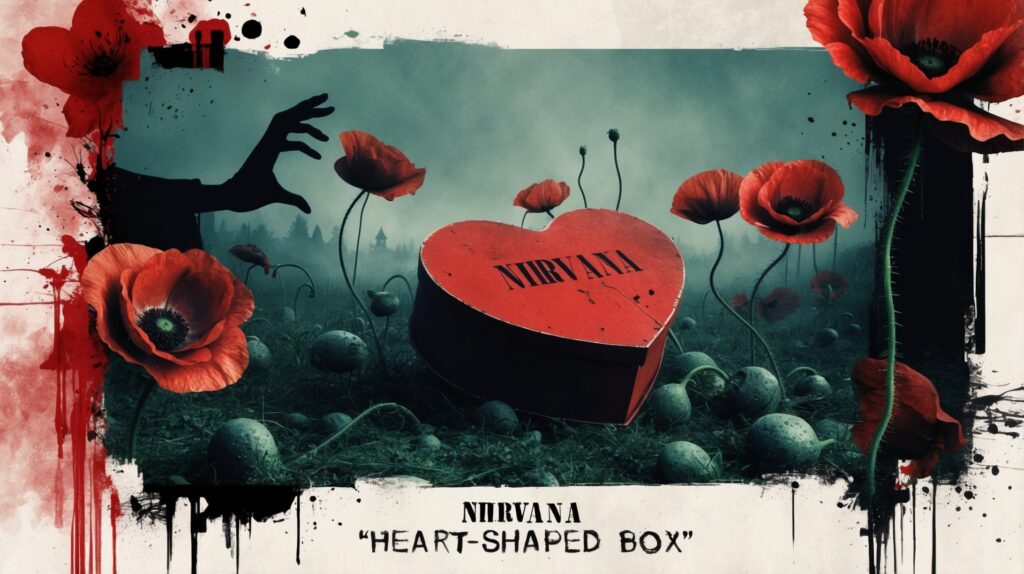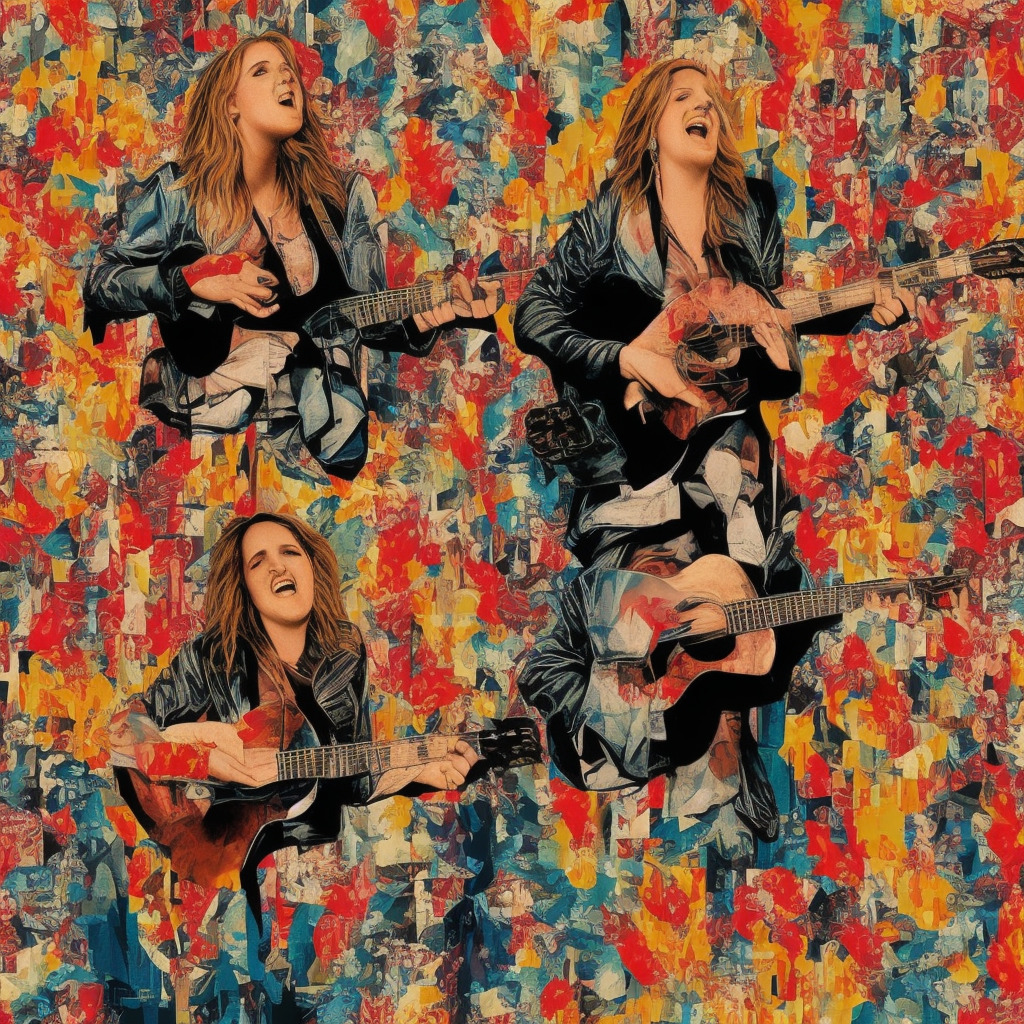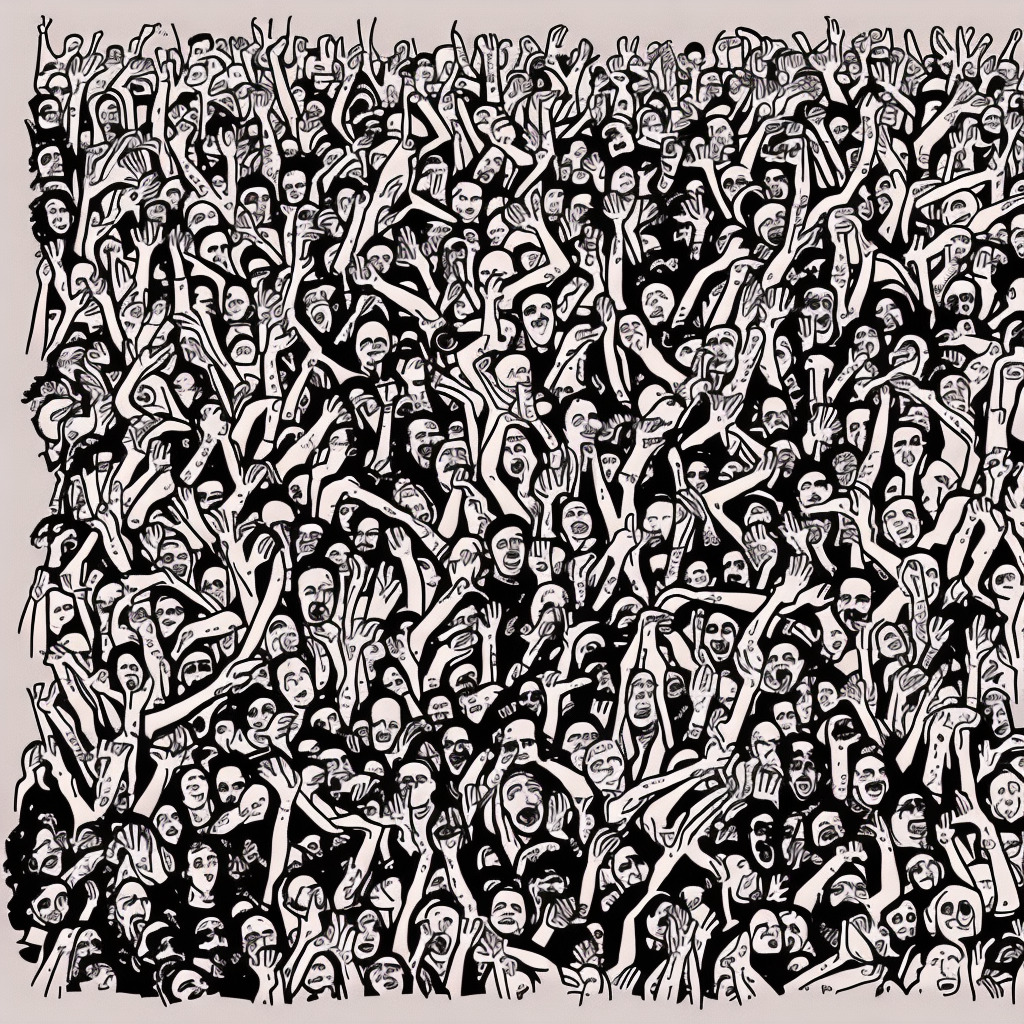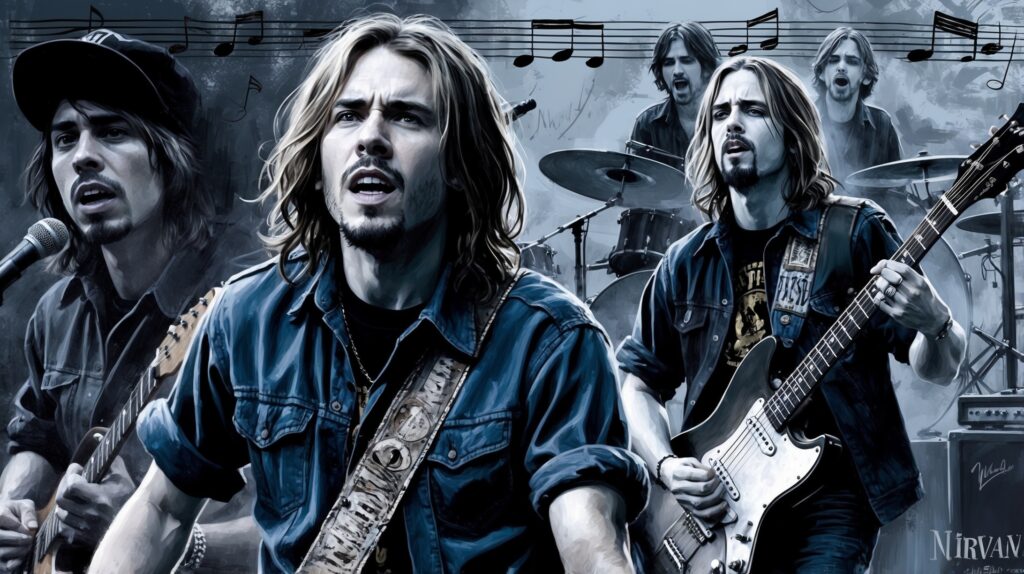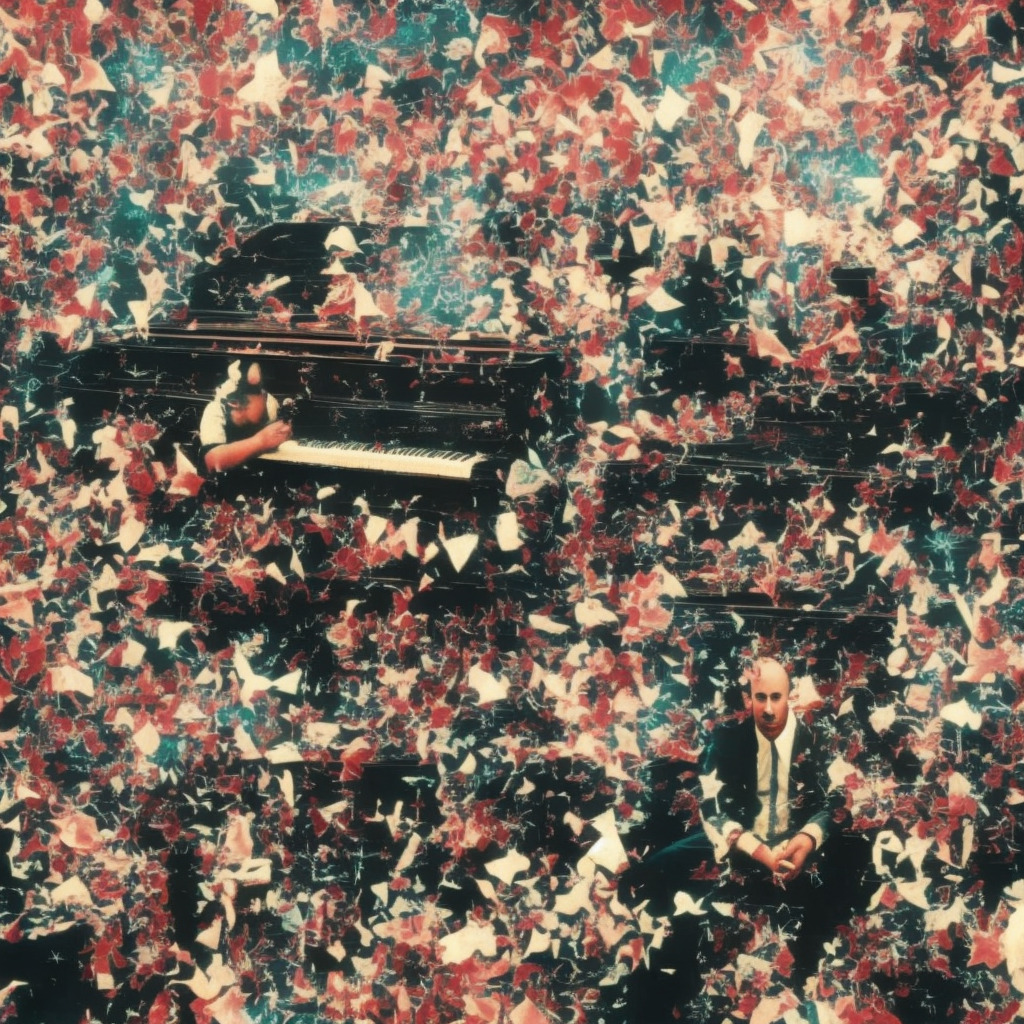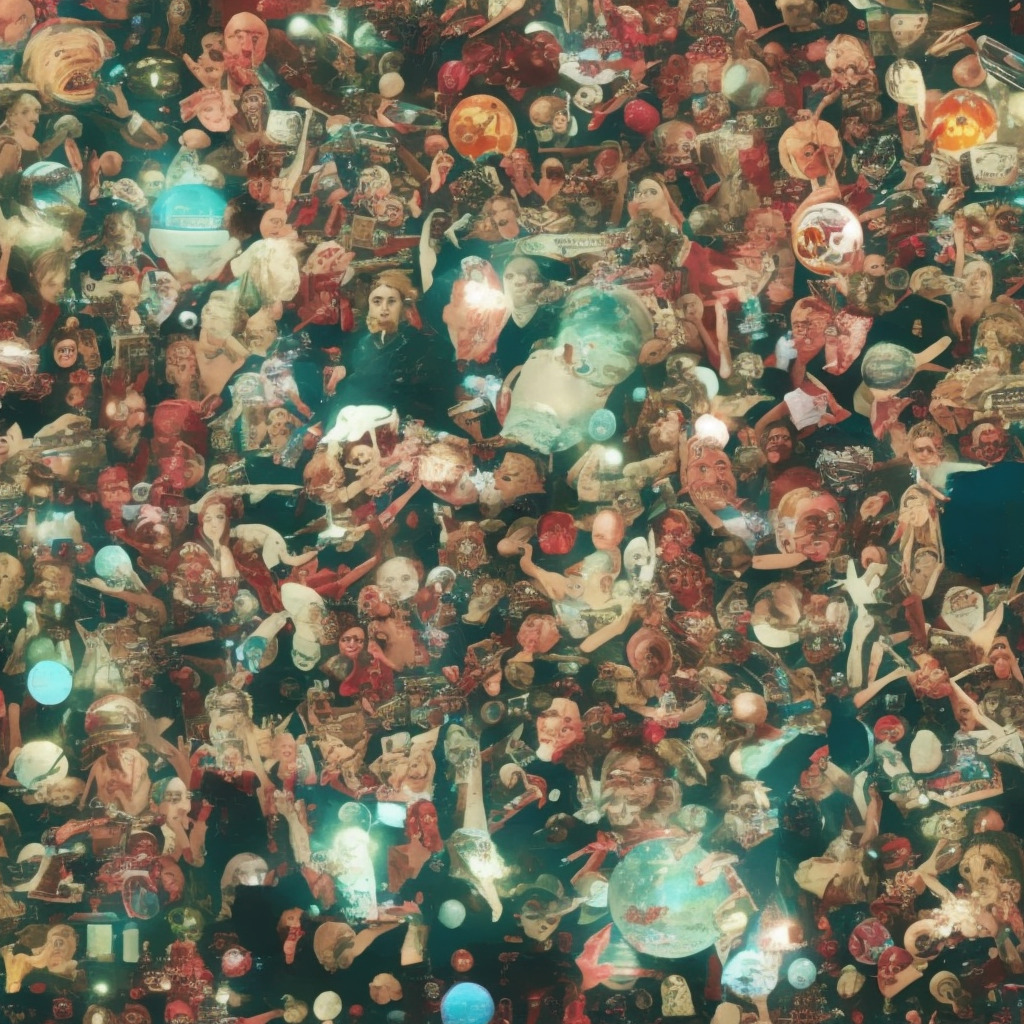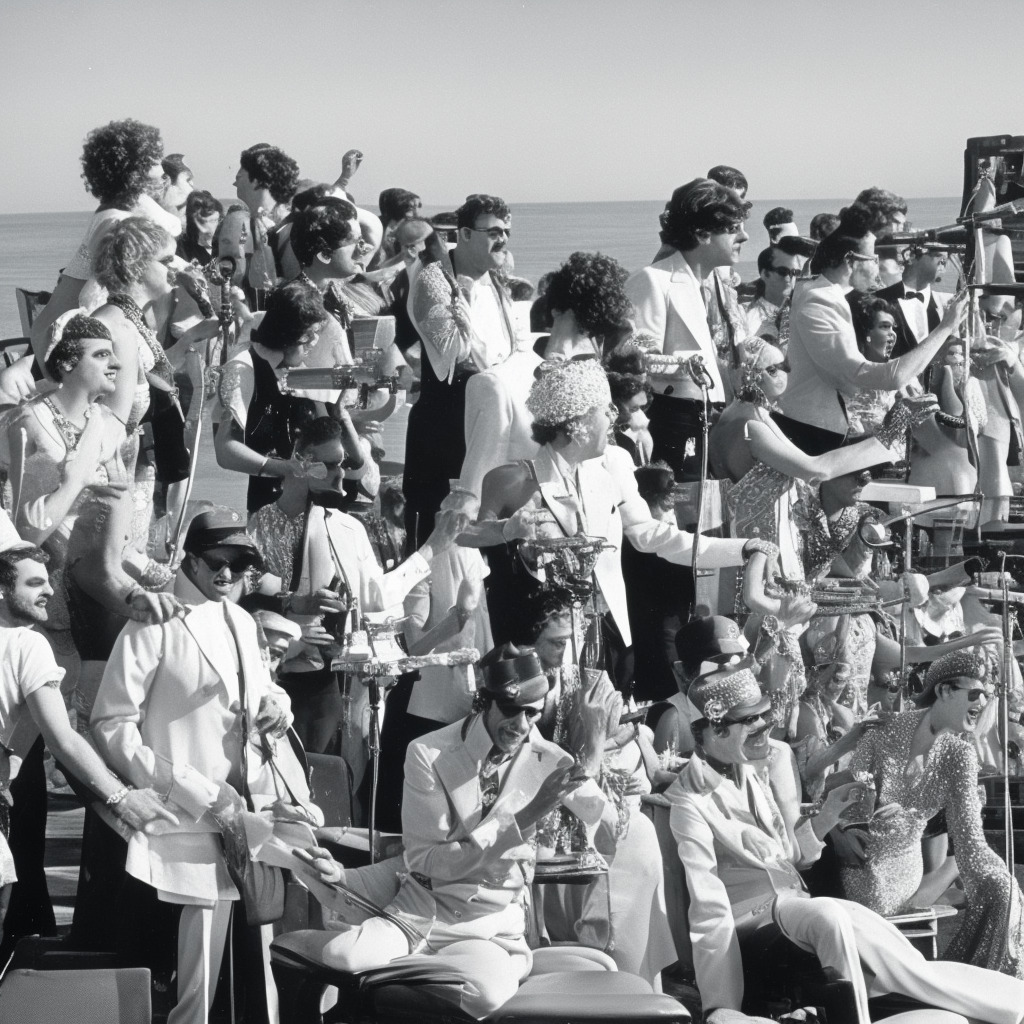The Enigmatic Force of Nirvana Behind ‘Heart-Shaped Box’
Explore the unique artistry of Nirvana during the era of ‘Heart-Shaped Box’; where Kurt Cobain’s lyrical genius and band’s raw sound captivated a generation.
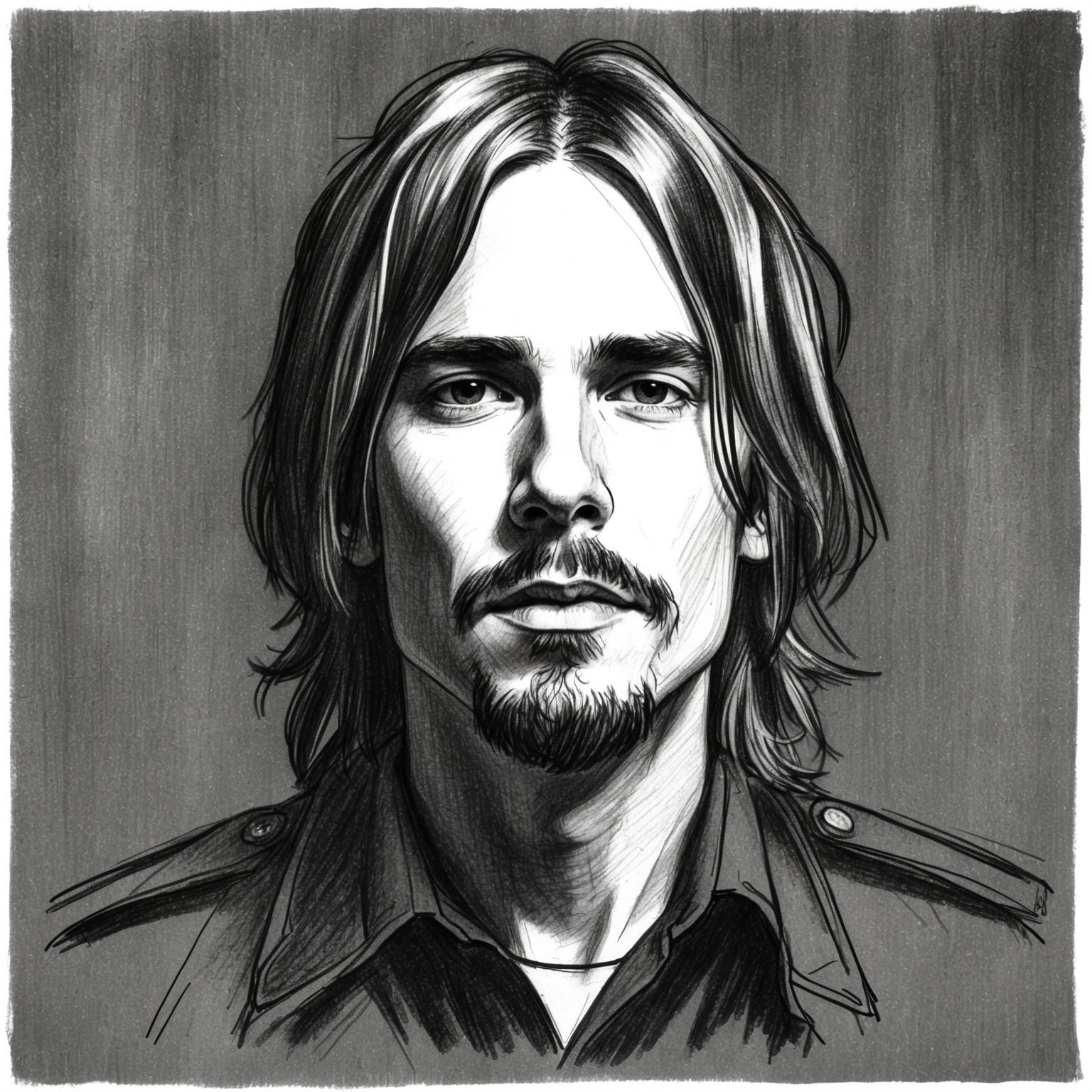
Nirvana, heralded as one of the most influential bands of the early 1990s, carved a niche for themselves in the grunge rock movement with their emotionally charged and raw sound. The release of ‘Heart-Shaped Box’ in 1993 marked a significant moment in their career, symbolizing the band’s unique ability to blend poetic lyrics with heavy instrumentation. This track, in particular, showcased the introspective brilliance and the brooding charisma of frontman Kurt Cobain, solidifying the band’s place in rock history.
Born in Aberdeen, Washington, Kurt Cobain’s early life was a melange of tribulations and artistic discoveries that would come to shape Nirvana’s music. The band’s inception began in the late 1980s, with Cobain collaborating with artists like Krist Novoselic and eventually, drummer Dave Grohl. Together, they captured the disenchanted voice of a generation, creating a soundscape that spoke to the angst of the youth of the era.
With ‘Heart-Shaped Box,’ Nirvana deepened their lyrical exploration, venturing into themes of longing and entrapment. Released during the height of their success following ‘Nevermind,’ the track was a testament to the band’s growth amidst a rapidly evolving music scene. The mid-90s were a period of intense creativity for Nirvana, with Cobain leading the charge in an almost solitary pursuit of authenticity and artistic purity. Despite his struggles, Cobain’s partnership with Novoselic and Grohl was nothing short of symbiotic, creating an indelible impact on the rock genre.
Kurt Cobain: The Genius Behind the Music
Kurt Cobain, the composer of “Heart-Shaped Box,” brought a unique blend of emotional intensity and musical innovation, infusing the track with his signature style.
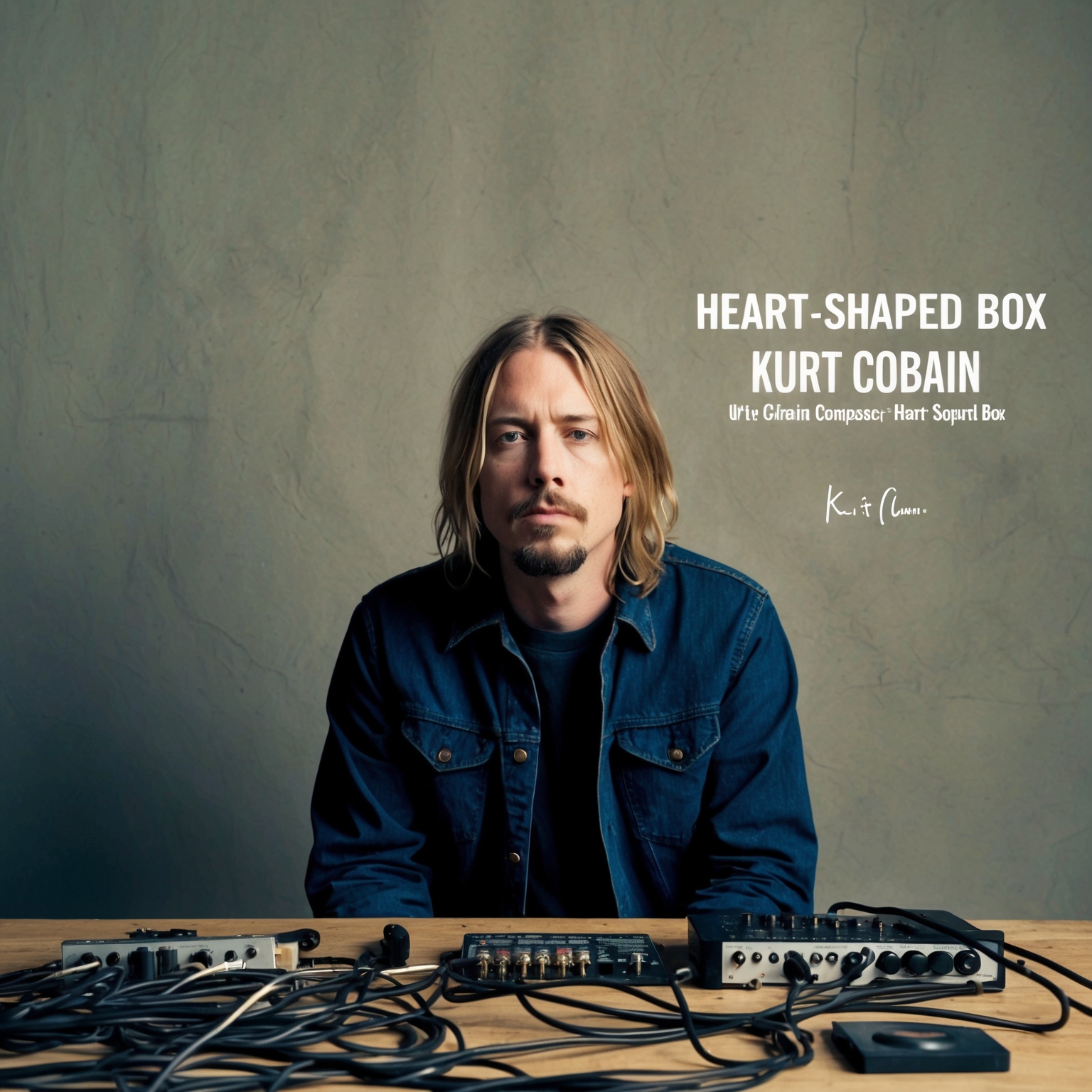
Background and Career: Kurt Cobain, the brilliant mind behind Nirvana’s iconic track “Heart-Shaped Box,” was born in Aberdeen, Washington, in 1967. His journey into music began at a young age, wherein he developed an affinity for songwriting and performing. Cobain’s career took a significant turn in the late 1980s when he formed the band Nirvana with bassist Krist Novoselic. The band quickly rose to prominence in the early 1990s, reshaping the musical landscape with their groundbreaking album “Nevermind.” Cobain, as the primary composer and lyricist, infused his work with raw emotion and introspective intensity, which resonated with audiences worldwide.
Musical Style and Influences: Cobain’s musical style was a tapestry of grunge, punk rock, and alternative rock, characterized by its raw and gritty sound. His influences ranged from The Beatles to The Melvins, and these inspirations were evident in his melodic yet often abrasive compositions. Cobain’s ability to blend catchy hooks with melancholic themes was a hallmark of his songwriting, making his music both relatable and innovative. The cultural zeitgeist of the early ’90s, with its themes of disillusionment and rebellion, greatly influenced Cobain’s work, allowing his compositions to voice a generation’s angst.
Role in the Song’s Creation: In the creation of “Heart-Shaped Box,” Cobain played a pivotal role, crafting both its haunting melody and its enigmatic lyrics. The song, reportedly inspired by personal experiences and complex emotions, showcases Cobain’s knack for intertwining compelling narratives with a memorable musical structure. His compositional style, marked by dynamic shifts and a blend of quiet-loud dynamics, was critical in shaping both the sonic texture and emotional impact of the track. Cobain’s unique approach to songwriting, which often involved layering contrasting elements, contributed significantly to the song’s enduring appeal.
Recognitions and Revamps: Heart-Shaped Box’s Impact and Legacy
Explore the impact and legacy of Nirvana’s ‘Heart-Shaped Box,’ including its accolades, notable cover versions, and appearances in TV shows.
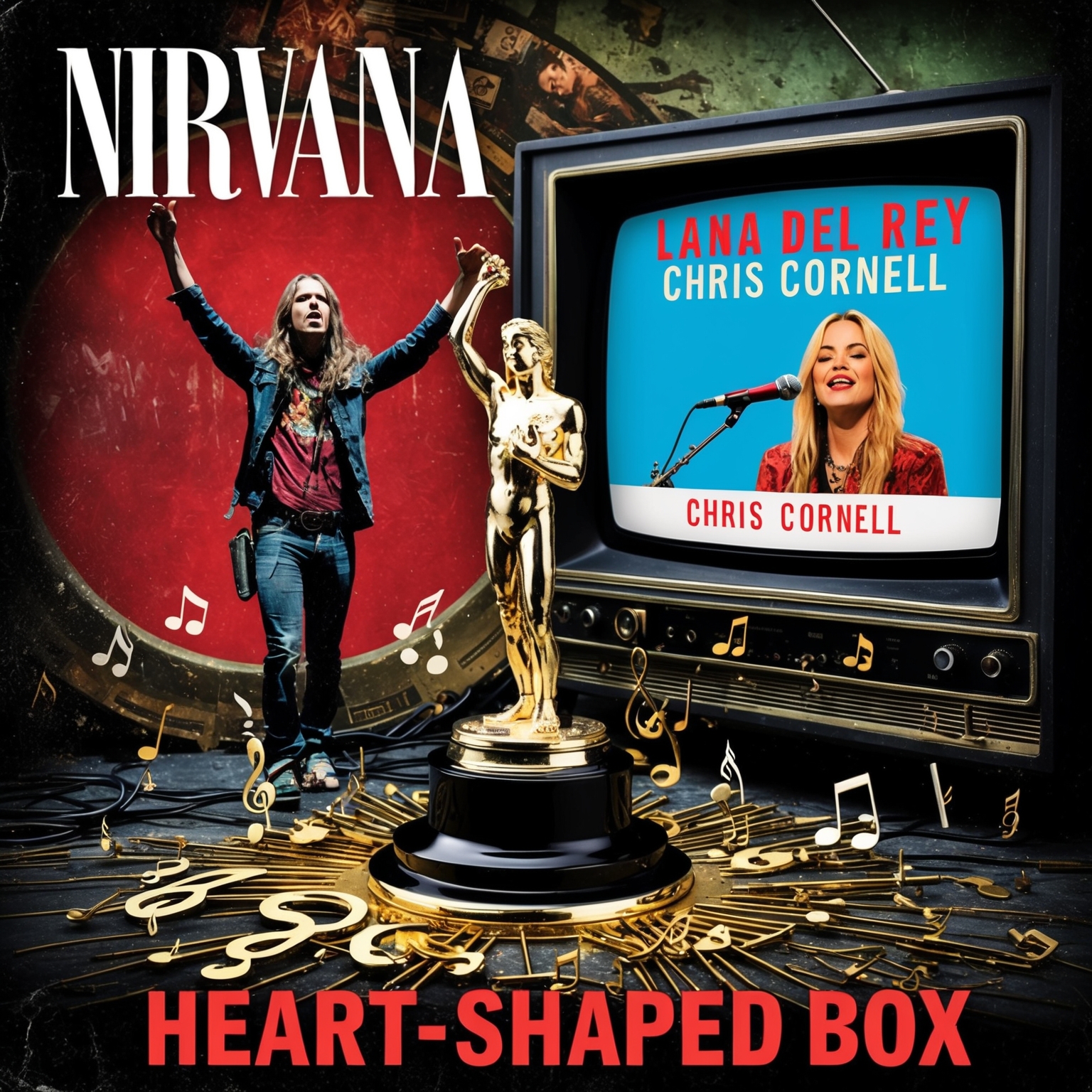
Recognitions and Revamps: Heart-Shaped Box’s Impact and Legacy
The Nirvana classic “Heart-Shaped Box” is more than just an emblematic grunge anthem; it has also earned itself various accolades and recognition across different platforms. Released as a single from their final studio album, *In Utero*, the song received widespread acclaim for its haunting lyrics and compelling melody. Although it didn’t win any major music awards directly, it has consistently topped various lists, being recognized as a quintessential 1990s track. The song frequently appears on ‘greatest songs’ compilations and continues to receive radio airplay, further cementing its status as a cultural touchstone.
The impact of “Heart-Shaped Box” is also visible in the multitude of covers by an array of artists who have interpreted the song through their styles. Noteworthy covers include a haunting rendition by Lana Del Rey, who brought a new dimension to the song with her ethereal voice. The late singer-songwriter Chris Cornell, along with his band Soundgarden, also paid tribute with a powerful live cover. Every cover adds fresh layers and perspectives to the already complex and emotionally intense song.
The influence of “Heart-Shaped Box” extends into visual mediums as well. The song has been featured in numerous TV shows, including popular series that aim to encapsulate the emotional turmoil and rebellious spirit that the song is so famous for. Although not as prevalent in video games, its select appearances contribute to creating immersive and engaging atmospheres. These appearances underscore the song’s ability to channel raw emotion and stirring intensity, vitalizing scenes with its unmistakable energy.
From Grunge Anthem to Chart Triumph
Explore how Nirvana’s “Heart-Shaped Box” became a chart-topping success, cemented their dominance in the 1990s grunge scene, and left a lasting cultural impact.
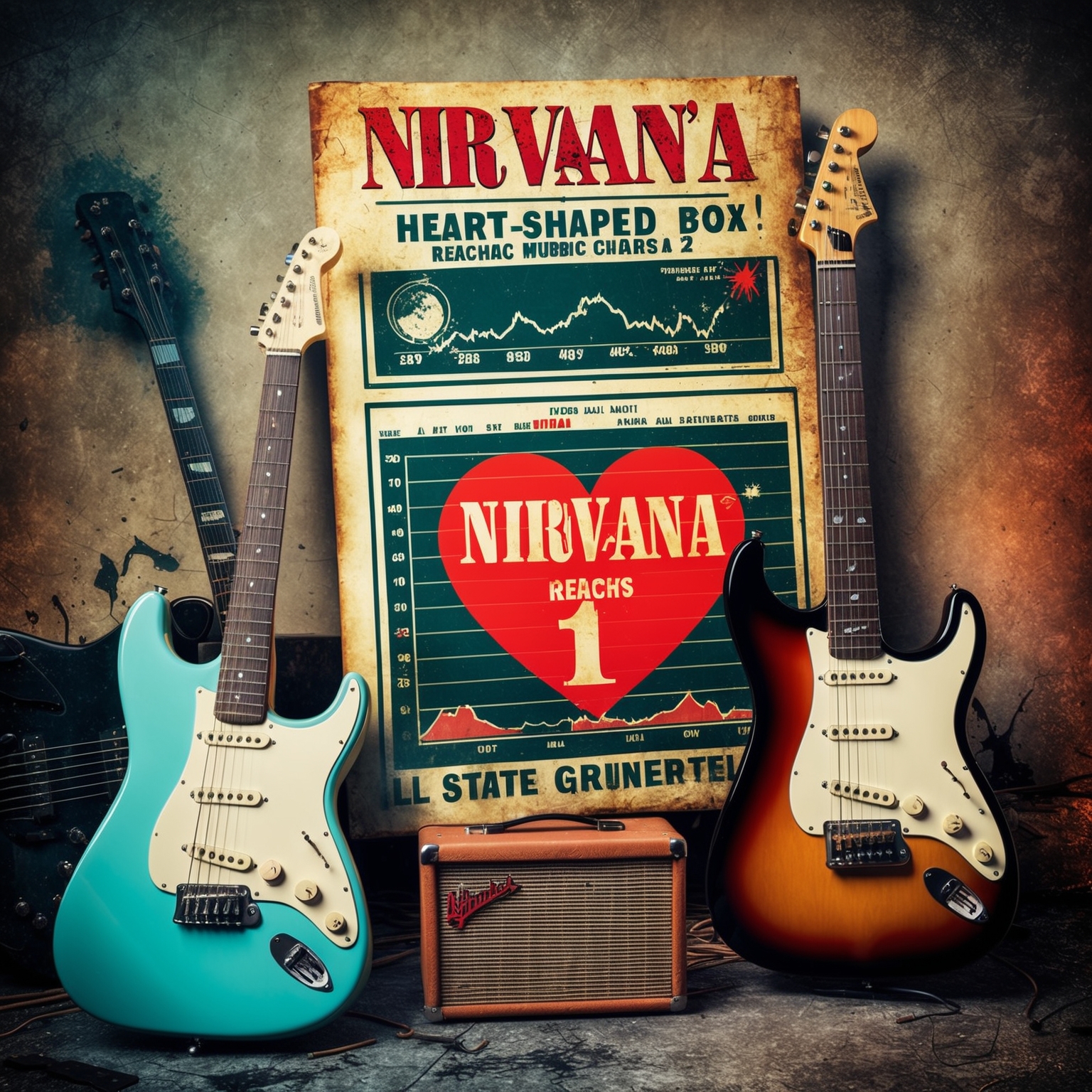
Nirvana’s “Heart-Shaped Box” was released on August 30, 1993, as the lead single from their acclaimed album, In Utero. The song marked a significant milestone in the band’s career, showcasing a more mature and complex sound. It debuted strongly on the charts, underscoring Nirvana’s existing popularity but also taking them into new territories. In the United States, the song peaked at number one on the Billboard Modern Rock Tracks chart, affirming Kurt Cobain’s prowess in crafting hits that resonated with the alternative rock crowd. Notably, it was their first release following the monumental success of Nevermind, making its chart performance even more critical to their trajectory.
Internationally, “Heart-Shaped Box” enjoyed considerable success. It reached number four on the UK Singles Chart and cracked the top 10 in several other countries, including Sweden and Ireland. The song’s darker themes and distinctive sound set it apart from other chart-toppers of the time, allowing Nirvana to stand out in an era saturated with diverse musical styles. It’s worth noting that “Heart-Shaped Box” was a powerful follow-up to their earlier work, proving that Nirvana was not a one-hit wonder, but a band capable of delivering consistent hits that could compete with mainstream pop and rock songs.
The impact of “Heart-Shaped Box” on Nirvana’s career was profound. It reinforced the band’s dominance in the grunge scene and cemented their legacy as one of the most influential bands of the 1990s. Critically, the song was lauded for its haunting lyrics and Cobain’s emotive vocal performance, contributing to its enduring popularity. The promotional efforts, including an iconic music video directed by Anton Corbijn, further fueled the song’s success. Even before the proliferation of streaming platforms and social media, “Heart-Shaped Box” managed to create a lasting cultural impact, inspiring countless artists and generations of music fans.
Visual Journey of ‘Heart-Shaped Box’
Explore the iconic ‘Heart-Shaped Box’ music video, directed by Anton Corbijn, noted for its surreal imagery and critical acclaim, solidifying its place in music history.

Nirvana’s ‘Heart-Shaped Box’ music video is more than just a visual accompaniment to a song. Directed by Anton Corbijn, a revered figure in the world of music videos and photography, the video plays a crucial role in deepening the impact of the track. Premiering in 1993, the video quickly became iconic, mirroring the complex and haunting nature of the song. It weaves together a tapestry of surreal and symbolic imagery that invites viewers to step into a dreamlike world, a hallmark of Corbijn’s avant-garde style.
The themes in the ‘Heart-Shaped Box’ video are rich with symbolism, touching upon ideas of life and death, innocence, and entrapment. The video is set against a backdrop of visceral, often jarring images—like a field of giant poppies, an elderly man suspended from a cross, and a little girl in a white robe reaching skyward. These elements create a striking contrast and invite interpretation and introspection, much like Nirvana’s lyrics often do. The bold visual choices, paired with Nirvana’s grunge soundscape, elevate the song’s evocative qualities.
Critically, the ‘Heart-Shaped Box’ video was well-received for its artistic ambition and execution. It won two MTV Video Music Awards in 1994 for Best Alternative Video and Best Art Direction, affirming its place in the annals of iconic music videos. The collaborative effort between Nirvana and Anton Corbijn is celebrated for pushing the boundaries of music video production, leaving a lasting influence on how artists conceptualize and execute visual storytelling in music.
Delving into the Musical Fabric of ‘Heart-Shaped Box’
Explore the intricate song structure of ‘Heart-Shaped Box’, where key, tempo, melody, and instrumentation blend to define Nirvana’s grunge legacy.

In ‘Heart-Shaped Box’, Nirvana showcases a distinctive musical composition typified by its haunting melodies and dynamic contrasts. The song is in the key of D Major, but it prominently features chromatic bass lines, adding to its unsettling atmosphere. The chord progression revolves around power chords, which epitomize the band’s grunge aesthetic. The tempo of the song is moderate, measured at about 100 beats per minute, allowing for both introspective and explosive sections.
Analytically, the melody follows a pattern that shifts between calm verses and aggressive choruses, mirroring the song’s emotional tension. Kurt Cobain’s soulful yet raspy voice beautifully blends with this progression, adding to the rawness of the track. The harmony is subtly enriched through the use of minor second intervals, providing an edge that aligns with the thematic depth of the lyrics. Rhythmically, the song employs syncopated drum patterns that enhance the dynamic flow between verse and chorus.
The instrumentation in ‘Heart-Shaped Box’ contributes significantly to its unique sound. The use of distorted guitars, alongside clean tones in the verses, creates a contrast that is emblematic of grunge music. The bass guitar’s melodic lines complement the foundation set by the drums. This track features production by Steve Albini, who helped capture Nirvana’s live energy in the studio. Comparatively, ‘Heart-Shaped Box’ marks a more polished yet still raw evolution from their earlier works like ‘Nevermind’, bridging melodic elements with the abrasive sound typical of ‘In Utero’.
An interesting anecdote about the recording of ‘Heart-Shaped Box’ is that it was initially demoed in sessions with different producers before Albini’s input steered it towards its final form. The song occupies a pivotal place in Nirvana’s discography, illustrating a maturity in their artistic direction and a transition in their sound, setting it apart from both ‘Nevermind’ and their subsequent works.
Deep Dive into ‘Heart-Shaped Box’ Lyrics
A deep dive into the lyrics of ‘Heart-Shaped Box’ unveils themes of vulnerability, manipulation, and emotional entrapment, enriched with metaphorical brilliance. The narrative style and literary devices used by Kurt Cobain offer a unique, multifaceted exploration, leaving room for varied interpretations and emotional resonance.
I’ve been locked inside your heart-shaped box for weeks
I’ve been drawn into your magnet tar pit trap
I wish I could eat your cancer when you turn black
Hey! Wait!
I’ve got a new complaint
Forever in debt to your priceless advice
Hey! Wait!
I’ve got a new complaint
Forever in debt to your priceless advice
Hey! Wait!
I’ve got a new complaint
Forever in debt to your priceless advice
Your advice
Meat-eating orchids forgive no one just yet
…
******* This Lyrics is NOT for Commercial use *******
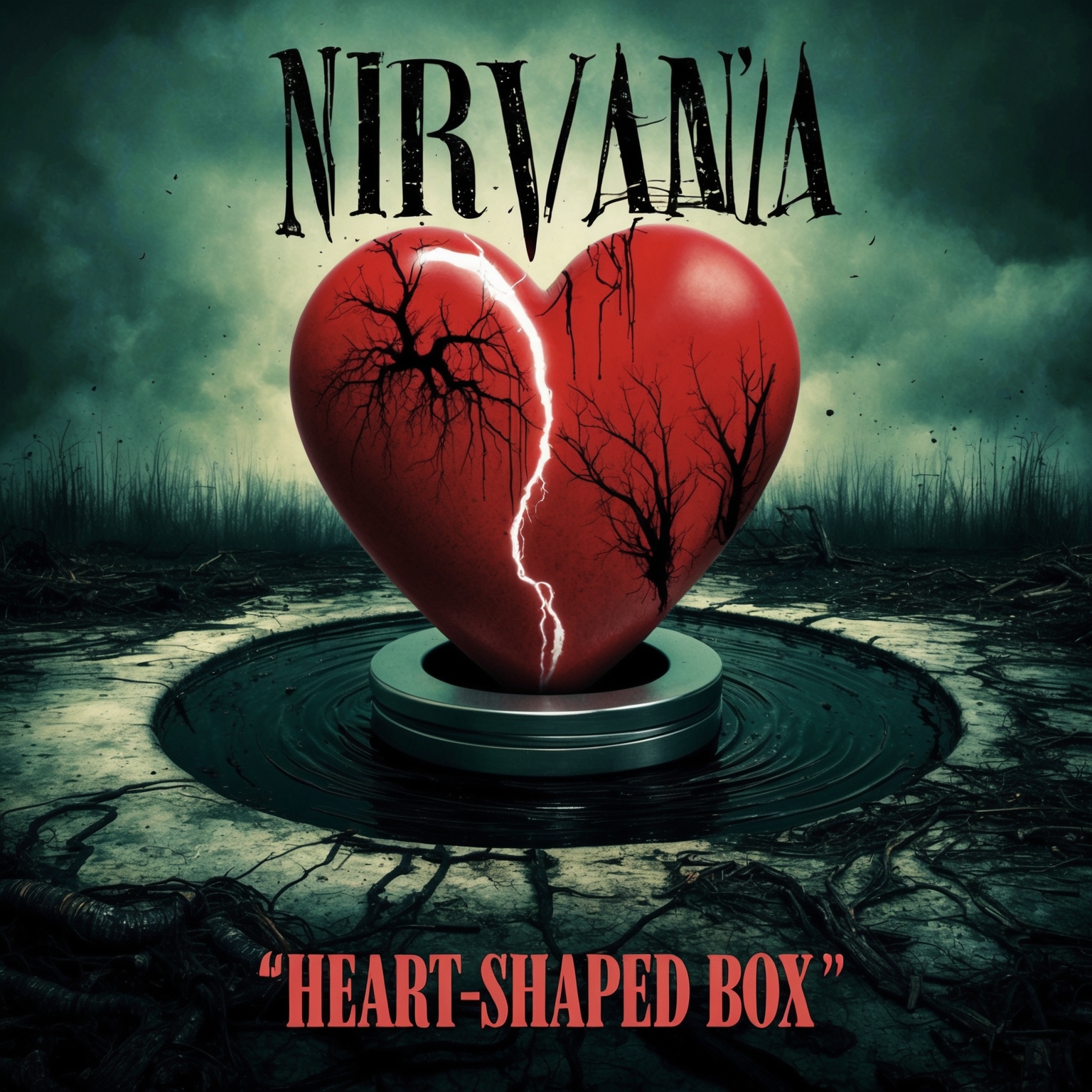 Nirvana’s ‘Heart-Shaped Box’ is replete with enigmatic and evocative lyrics that continue to intrigue listeners since its debut. The song’s themes are multi-layered, with interpretations ranging from personal relationships to broader societal critiques. The opening lines—’She eyes me like a Pisces when I am weak’—immediately set a tone of vulnerability and emotional turbulence, hinting at a complex dynamic between the narrator and another character. Whether this is a reflection of Kurt Cobain’s own struggles or a broader commentary on interpersonal relationships, the lyrics invite listeners to explore their meanings. Exploring the lyrical themes further, we find that much of ‘Heart-Shaped Box’ revolves around a feeling of entrapment and manipulation. The striking imagery of being ‘locked inside your heart-shaped box for weeks’ suggests a sense of captivity, while ‘drawn into your magnet tar pit trap’ conveys an inescapable pull, perhaps analogous to the struggles with addiction or toxic relationships. These themes resonate deeply with audiences, touching on universal emotions, making the song both timeless and relatable. When examining the song’s narrative structure, we see that it takes on a freeform style, rich in metaphor and symbolic language. This ambiguity allows for multiple interpretations, with metaphors such as ‘I wish I could eat your cancer when you turn black’ providing a visceral and unsettling picture that fuels listeners’ intrigue. This lyric specifically has sparked numerous interpretations, from representing a desire to eradicate negativity to commenting on self-destructive behavior. The narrative style shifts between direct address and introspective musings, reflecting a personal and immersive storytelling approach unique to Cobain’s writing. Delving into literary devices, ‘Heart-Shaped Box’ showcases Kurt Cobain’s masterful use of language. The lyrics are dense with alliteration, as seen in ‘magnet tar pit trap,’ enhancing their rhythmic quality and emotional impact. The deliberate use of vivid, sometimes disturbing imagery draws parallels with the works of Gothic literature, contributing to the song’s haunting aura. These elements not only captivate the listener’s imagination but also underscore the emotional intensity that Nirvana is known for. An interesting dimension to the song is how fans and critics have compared it to other Nirvana tracks. While maintaining the band’s raw and grunge aesthetic, its lyrics delve deeper into introspective and abstract themes than some of their more straightforward tracks like ‘Smells Like Teen Spirit.’ In this way, ‘Heart-Shaped Box’ stands apart in Nirvana’s discography as a work that invites deeper contemplation and reflection. The emotional impact of ‘Heart-Shaped Box’ is undeniably profound. The repeating chorus lines, ‘I’ve got a new complaint, forever in debt to your priceless advice,’ encapsulate a sense of entanglement and frustration. These words resonate with anyone who has felt indebted to someone else’s influence or trapped by unsolicited guidance. This emotional relatability, compounded by Cobain’s raw vocal delivery, is a pivotal element in the song’s enduring appeal.
Nirvana’s ‘Heart-Shaped Box’ is replete with enigmatic and evocative lyrics that continue to intrigue listeners since its debut. The song’s themes are multi-layered, with interpretations ranging from personal relationships to broader societal critiques. The opening lines—’She eyes me like a Pisces when I am weak’—immediately set a tone of vulnerability and emotional turbulence, hinting at a complex dynamic between the narrator and another character. Whether this is a reflection of Kurt Cobain’s own struggles or a broader commentary on interpersonal relationships, the lyrics invite listeners to explore their meanings. Exploring the lyrical themes further, we find that much of ‘Heart-Shaped Box’ revolves around a feeling of entrapment and manipulation. The striking imagery of being ‘locked inside your heart-shaped box for weeks’ suggests a sense of captivity, while ‘drawn into your magnet tar pit trap’ conveys an inescapable pull, perhaps analogous to the struggles with addiction or toxic relationships. These themes resonate deeply with audiences, touching on universal emotions, making the song both timeless and relatable. When examining the song’s narrative structure, we see that it takes on a freeform style, rich in metaphor and symbolic language. This ambiguity allows for multiple interpretations, with metaphors such as ‘I wish I could eat your cancer when you turn black’ providing a visceral and unsettling picture that fuels listeners’ intrigue. This lyric specifically has sparked numerous interpretations, from representing a desire to eradicate negativity to commenting on self-destructive behavior. The narrative style shifts between direct address and introspective musings, reflecting a personal and immersive storytelling approach unique to Cobain’s writing. Delving into literary devices, ‘Heart-Shaped Box’ showcases Kurt Cobain’s masterful use of language. The lyrics are dense with alliteration, as seen in ‘magnet tar pit trap,’ enhancing their rhythmic quality and emotional impact. The deliberate use of vivid, sometimes disturbing imagery draws parallels with the works of Gothic literature, contributing to the song’s haunting aura. These elements not only captivate the listener’s imagination but also underscore the emotional intensity that Nirvana is known for. An interesting dimension to the song is how fans and critics have compared it to other Nirvana tracks. While maintaining the band’s raw and grunge aesthetic, its lyrics delve deeper into introspective and abstract themes than some of their more straightforward tracks like ‘Smells Like Teen Spirit.’ In this way, ‘Heart-Shaped Box’ stands apart in Nirvana’s discography as a work that invites deeper contemplation and reflection. The emotional impact of ‘Heart-Shaped Box’ is undeniably profound. The repeating chorus lines, ‘I’ve got a new complaint, forever in debt to your priceless advice,’ encapsulate a sense of entanglement and frustration. These words resonate with anyone who has felt indebted to someone else’s influence or trapped by unsolicited guidance. This emotional relatability, compounded by Cobain’s raw vocal delivery, is a pivotal element in the song’s enduring appeal.
? Did you know? Nirvana’s Heart-Shaped Box was inspired by a literal heart-shaped box #KurtCobain received from #CourtneyLove! ?? #90sNostalgia #GrungeLegends #MusicTrivia tinyurl.com/36sph2py
Click to Tweet

